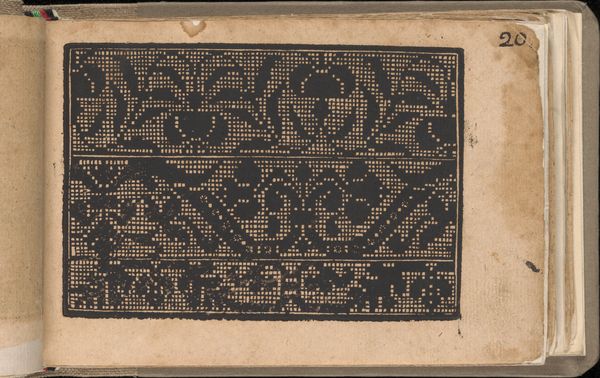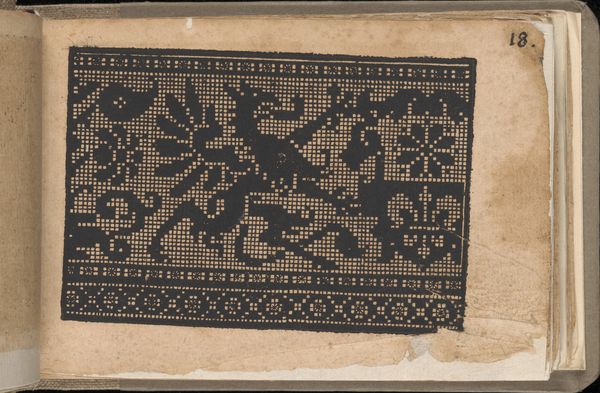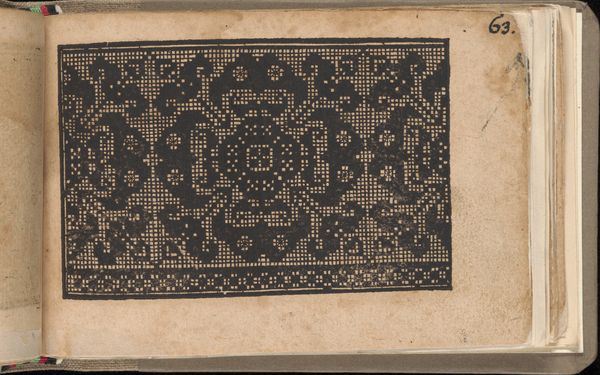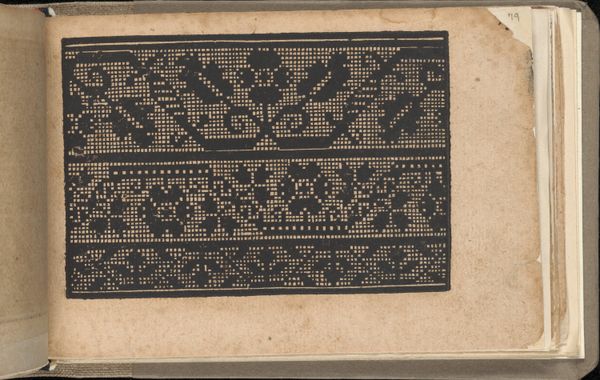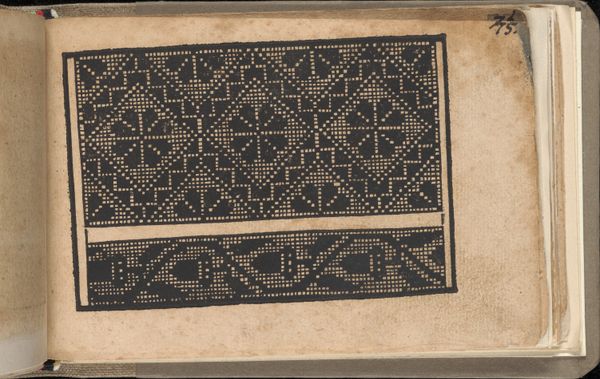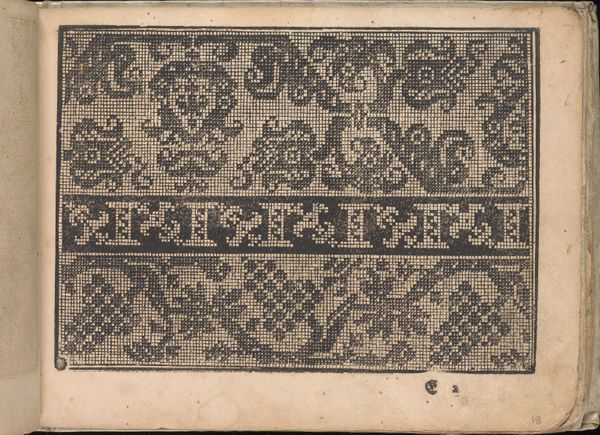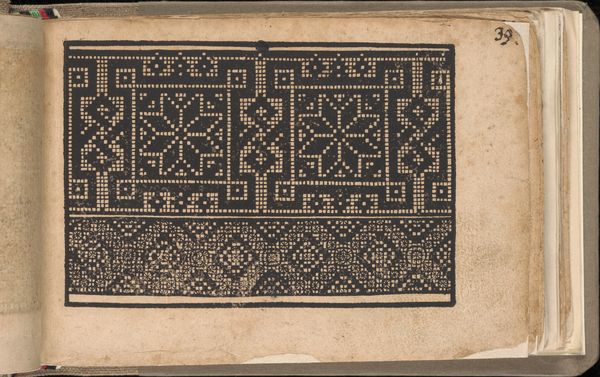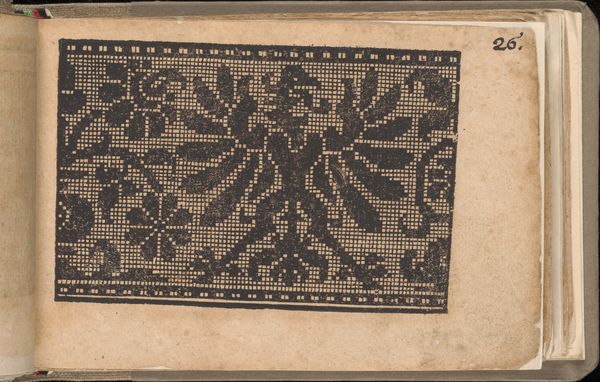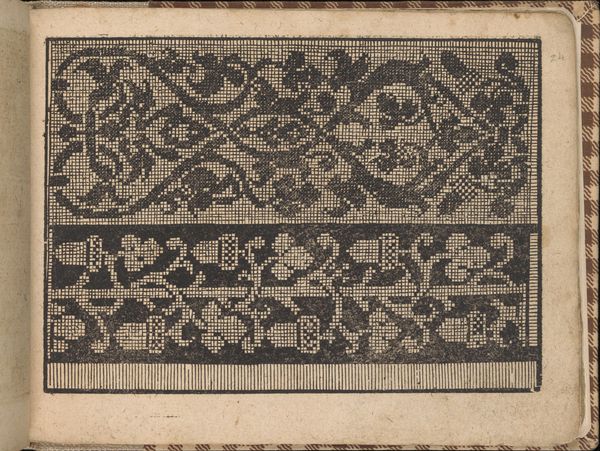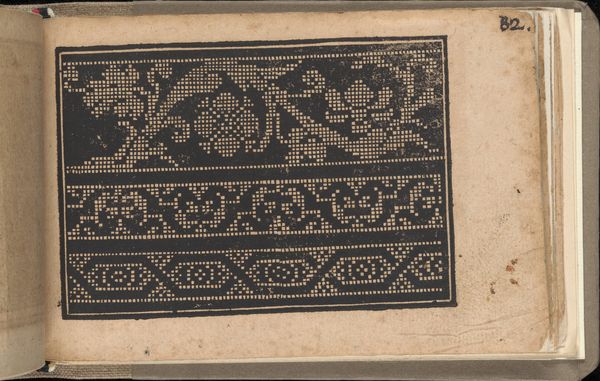
drawing, graphic-art, ornament, print, woodcut
#
drawing
#
graphic-art
#
ornament
#
pottery
# print
#
book
#
woodcut
#
northern-renaissance
Dimensions: Overall: 4 1/2 x 6 11/16 in. (11.5 x 17 cm)
Copyright: Public Domain
Curator: Welcome. Today, we're observing a page from Sigismundus Latomus’s "Schön newes Modelbuch," dating back to 1608. This particular page, designated 24r, is a woodcut, now held at The Metropolitan Museum of Art. Editor: It has this stark, almost oppressive quality. All that tightly packed detail within a strict grid, like peering through an elaborate screen or a densely woven fabric sample. The effect is strangely claustrophobic. Curator: The essence lies in its ornament, doesn't it? Consider the print’s texture and density – it provides us visual information and instruction about period pattern and technique, the way it merges art and craft. Editor: And craft so intricately tied to women's work of the period – embroidery, lace-making. This wasn't just decoration; it was a visual language, a marker of status, skill, and even identity, particularly for women navigating social expectations and limitations in the domestic sphere. Curator: Indeed, these books were instrumental in disseminating design and pattern across Europe. Semiotically, you see an intentional combination of visual vocabulary which acted almost as a codex or trade lexicon across makers and customers of finery. Editor: Right. Each motif possibly holding cultural or social symbolism relevant to the book's readers, its users, the makers who turned abstract designs into tactile realities, imbued it with meaning in the process of creation. Curator: Looking closely, notice the meticulous carving. The Northern Renaissance valued intricate detailing; observe the visual harmony in the composition. The interplay between the positive and negative spaces creates an almost palpable texture, regardless of scale. Editor: Precisely. The fact that these patterns served a practical, vocational function within very structured societal parameters is hard to ignore. They simultaneously reveal and conceal complex narratives of gender and labor. Curator: A balanced perspective allows for a deeper encounter with the art, even a print. It embodies form and culture in dynamic equilibrium. Editor: Right, hopefully enabling new modes of investigation.
Comments
No comments
Be the first to comment and join the conversation on the ultimate creative platform.

